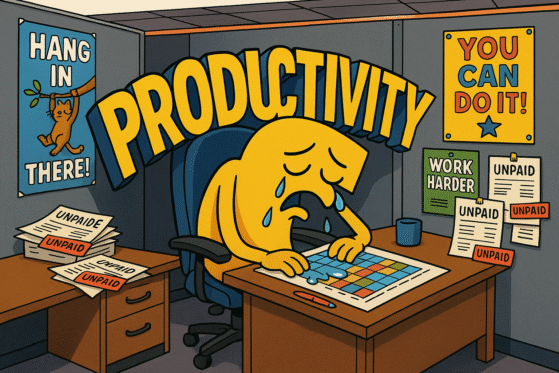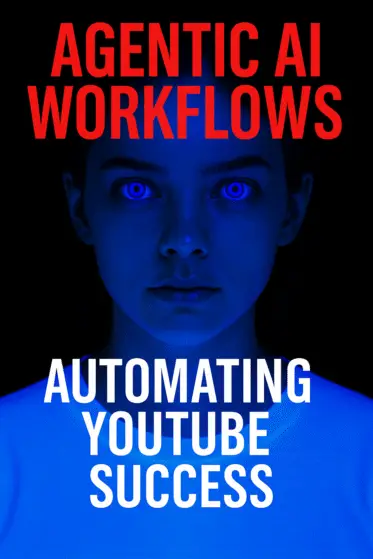Welcome to AI Leader Edge, where we provide factual assessments of AI tools to help you make informed decisions. Interested in exploring 3,500+ additional AI tools? Visit the AI Leader Edge Toolbox to discover, learn about, and implement unique AI solutions that can enhance your creative and business processes.
Today, we’re examining OpenAI’s Sora, a text-to-video AI system that addresses longstanding challenges in visual content creation. Check out our previous article on the features of Agentic AI workflows using Katalist AI.
Visual content creation has historically presented significant barriers for most creators. Traditional video production requires substantial investment in software licenses, often costing hundreds of dollars monthly for professional-grade tools like Adobe Creative Suite. Beyond software costs, creating quality visual content demands technical expertise in editing techniques, color grading, motion graphics, and export optimization. The learning curve is steep, often requiring months or years to achieve professional-level results.
The time investment compounds these challenges. A simple promotional video might require days of work: conceptualization, storyboarding, asset gathering, filming or graphics creation, editing, and post-production refinement. For businesses and individual creators, this time-to-output ratio often makes professional visual content prohibitively expensive or practically impossible.
Sora addresses these fundamental barriers by offering what we might call “natural language video creation” – the ability to generate sophisticated visual content using simple text descriptions.
What Makes Sora Different in the AI Landscape
Sora represents a significant development in generative AI technology, specifically designed for video creation. Unlike previous AI tools that focus on static image generation or simple animations, Sora produces high-quality video content that maintains temporal consistency – meaning elements in the video move naturally and maintain coherence across frames.
The technical foundation of Sora builds upon diffusion model architecture, similar to other generative AI systems, but optimized specifically for video content. This means the system understands not just how to create individual images, but how those images should flow together to create believable motion and narrative progression.
What sets Sora apart from traditional video editing software is its ability to interpret complex scene descriptions and generate appropriate visual content automatically. Instead of manually placing objects, adjusting lighting, and crafting transitions, users describe their vision in natural language, and Sora handles the technical implementation.
The Practical Workflow: From Concept to Creation
Understanding how Sora works in practice helps illuminate why this represents such a significant shift in content creation workflows. The process begins with what the system calls “prompt engineering” – crafting descriptive text that effectively communicates your creative vision.
When you input a description like “A professional businesswoman giving a presentation in a modern conference room with floor-to-ceiling windows overlooking a city skyline,” Sora analyzes multiple aspects of this request. It identifies the main subject (businesswoman), the action (giving a presentation), the setting (modern conference room), and specific environmental details (windows, city skyline).
The system then generates a video that incorporates these elements, ensuring proper lighting that would naturally occur in such a setting, appropriate clothing and professional demeanor for the subject, and realistic movement patterns for someone giving a presentation. The technical complexity behind these generations is enormous, yet the user experience remains remarkably simple.
You can refine your results through iterative prompting. If the initial output lacks specific details you envisioned, you might add clarifying phrases: “The businesswoman is pointing to a large display screen showing quarterly growth charts, sunlight streaming through the windows creates warm lighting on her face.” This additional context helps Sora generate more precisely aligned content.
Breaking Down the Technical Barriers
The democratization aspect of Sora becomes clearer when we examine what it eliminates from traditional content creation workflows. Professional video production typically requires understanding of:
Color theory and grading principles Lighting setup and manipulation Camera movement and framing techniques Audio synchronization and editing Rendering settings and export optimization Motion graphics and effects creation
Sora abstracts away these technical requirements, allowing creators to focus on conceptual and narrative elements rather than technical implementation. This shift enables professionals in various fields to create content that previously required specialized video production teams.
For example, an educator wanting to create explanatory videos for complex concepts can now describe the visual scenarios they need rather than learning video editing software. A marketing professional can generate product demonstration videos by describing the scenarios rather than coordinating filming sessions. This accessibility opens up new possibilities for content creation across industries.
Real-World Applications and Use Cases
To understand Sora‘s practical impact, let’s examine specific implementation scenarios across different industries and creator types.
Educational content creators are using Sora to visualize abstract concepts that were previously difficult to represent. A physics teacher might describe a scenario showing “electrons orbiting an atom nucleus, with visible probability clouds shifting as energy levels change.” This creates engaging visual content that helps students understand complex concepts without requiring the teacher to learn 3D animation software.
Marketing teams leverage Sora for rapid prototype creation. Instead of commissioning expensive video productions for campaign concepts, teams can generate multiple versions of advertisements to test messaging and visual approaches. This allows for more experimental and iterative marketing strategies without significant financial risk.
Social media content creators use Sora to maintain consistent posting schedules without overwhelming production demands. A lifestyle influencer might generate scenic backgrounds, product showcases, or narrative content that matches their brand aesthetic simply by describing the desired scenes.
Small business owners find particular value in Sora‘s accessibility. A local restaurant can create appealing social media content showcasing their dishes and ambiance without hiring professional videographers or investing in expensive equipment.
Understanding Limitations and Realistic Expectations
While Sora represents a significant advancement in content creation tools, understanding its limitations helps set realistic expectations for implementation. Like all current AI systems, Sora works best within certain parameters and may struggle with highly specific or unusual requests.
The system occasionally produces inconsistencies in longer videos, where elements might change unexpectedly between scenes. While Sora excels at generating visually appealing content, it may not always perfectly match specific brand guidelines or highly detailed creative visions.
Current video lengths have practical limitations, with generated content typically ranging from short clips to medium-length segments rather than full-length productions. For projects requiring precise control over every visual element, traditional production methods might still prove more suitable.
There’s also the question of creative authenticity. While Sora democratizes video creation, some argue it might lead to homogenization of visual content as users rely on AI-generated rather than originally created material. Balancing efficiency with creative uniqueness becomes an important consideration for content creators.
Practical Implementation Strategies
For organizations and individuals considering Sora integration, strategic implementation proves crucial for maximizing benefits while avoiding common pitfalls. Start with low-stakes projects to understand the tool’s capabilities and develop effective prompting techniques.
Develop a library of successful prompts that generate consistent results for your brand or content style. Think of this as creating templates for common content needs – product showcases, talking head videos, or branded backgrounds can be standardized through refined prompting approaches.
Consider Sora as part of a broader content creation toolkit rather than a complete replacement for all video production methods. Complex projects might benefit from hybrid approaches, where Sora generates base content that’s further refined through traditional editing techniques.
Training team members on effective prompt crafting becomes essential for organizations adopting Sora. While the tool is accessible, maximizing its potential requires understanding how to communicate effectively with AI systems through natural language.
Economic Implications for Content Creators
The economic impact of tools like Sora extends beyond simple cost savings. For freelance video creators, it presents both opportunities and challenges. While some routine video production work might become automated, new opportunities emerge in AI-assisted production, prompt engineering, and hybrid content creation approaches.
Organizations can redirect budgets from routine video production to higher-level creative strategy and campaign development. This shift potentially leads to more experimental and diverse content strategies as the cost barrier for testing new approaches decreases.
Small businesses and independent creators gain access to visual content creation capabilities previously reserved for organizations with substantial production budgets. This leveling effect might increase competition in content marketing while also expanding overall market opportunities.
The Future Landscape of Visual Storytelling
Looking ahead, tools like Sora suggest a future where technical implementation becomes increasingly automated, allowing creators to focus on conceptual and narrative elements. This shift might lead to new forms of visual storytelling that blend AI-generated content with human creativity and direction.
The skill sets valued in content creation are likely to evolve. While technical proficiency in editing software becomes less critical, skills in creative direction, prompt engineering, and conceptual development become more valuable.
Integration with other AI tools promises even more sophisticated content creation workflows. Imagine Sora working alongside AI writing assistants for scripts, AI audio generators for soundtrack creation, and AI-powered editing tools for final production optimization.
Conclusion
Sora exemplifies how artificial intelligence can make complex technical processes accessible through simplified interfaces. By removing technical barriers to visual content creation, it enables a broader range of people to express their ideas through video content.
The key to successful implementation lies not in completely replacing traditional content creation methods, but in understanding where AI tools like Sora add the most value. For rapid prototyping, concept visualization, and routine content generation, Sora offers compelling advantages. For projects requiring precise creative control or unique artistic vision, hybrid approaches combining AI efficiency with human creativity often yield the best results.
As we continue exploring these emerging technologies, remember that tools like Sora are most powerful when they augment human creativity rather than replace it. The future of visual content creation likely involves collaboration between human imagination and AI implementation, creating new possibilities for storytelling and communication.
Explore Additional AI Tools for Creators
Interested in exploring 3,500+ additional AI tools? Visit the AI Leader Edge Toolbox to discover, learn about, and implement unique AI solutions that can enhance your creative and business processes.
Need Expert AI Implementation Guidance?
If you require assistance evaluating these tools based on your specific business model or industry requirements, contact our team at info@aileaderedge.ai. We specialize in helping organizations make informed AI decisions based on potential impact rather than market hype.
Happy strategizing,
Stay Visionary, Lead with an Edge!
P.S. This article aims to inform AI Leader Edge readers about available options for AI adoption and implementation. Knowledge is power. We present AI not as a threat but as an evolution in the dynamic world of digital influence.








